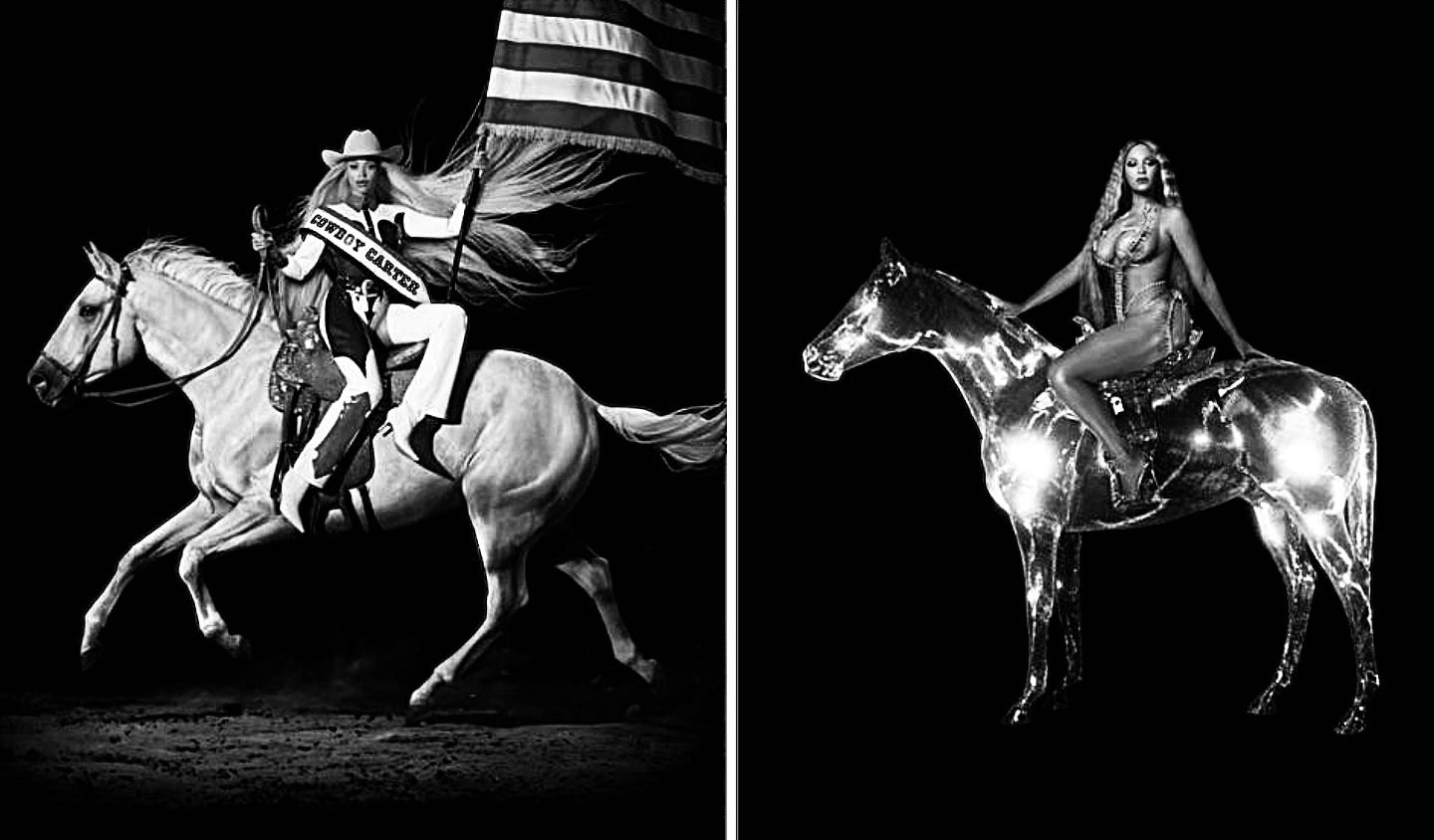A Tale of Two Horsies
The similarities begin and end with the album covers:
After my examination of “Cowboy Carter” during Grammy week (within the context of it being a Country album) I had an itch to examine that data in comparison to Beyoncé’s previous album, “Renaissance”. If you’re new, you can find details about me and this data project here.
Being somewhat familiar with both albums, I knew they were very different. But I was somewhat surprised at the ways in which they were different. And it has lead me to a loose conclusion supported by the data: Beyoncé made musical choices that directly contributed to “Renaissance” performing much better in the charts than “Cowboy Carter”.
The Music
It all starts with the line chart above.
It’s not even debatable: “Cowboy Carter” performed poorly in the Hot100 charts compared to “Renaissance.” Many would simply blame this on the fact that the vast majority of her fans are not country music fans. And while I don’t discount this playing some role, I don’t think it entirely explains the disparity in performance. After all, “Renaissance” leaned very heavily into the 90s House genre, which is another genre the majority of her fans were not likely to be especially familiar with either. Seen below, this graphic shows the comparatively heavy usage of Throwback elements which in this case are connected to 90s House.
So I would like to argue that rather than the primary factor in the difference of chart performance being genre, it was more likely due to an accumulation of musical choices.
To begin with, the instrumentation on “Renaissance” was much more focused and simple. Seen above, the very heavy use of synthesizers (both Modern and Vintage) speak to this as does the general concentration of instrumentation.
That contrasts with the instrumentation on “Cowboy Carter” which is more varied and bold (especially for a Country album) but ultimately less focused.
She was much more intentional about pop-craft in the song-writing on “Renaissance”. The use of pre-choruses1 was significantly higher on this album compared to “Cowboy Carter”. This indicates attention to crafting songs that will appeal to the audience of popular music.
In terms of vocal performances above, “Cowboy Carter” had more variety in spite of being a Country album. In contrast, “Renaissance” was more streamlined.
And again, if we look at the different vocal accents used on the two albums we see more focus on “Renaissance” and a more diffuse approach on “Cowboy Carter”.
The Content
Lastly, when looking at lyrical content we see a greater variety of themes on “Cowboy Carter”, particuarly ones like Biographic which speak to the artist focusing more on herself rather than her audience. By the same token, “Renaissance” is simpler and particularly dominated by Sex, Money and Ego.2 And it features more audience-focused content like Motivational lyrics that often nurture a direct connection with the listener.
Overall
According to Beyoncé herself, the motivation for “Cowboy Carter” is rooted in her feelings of exclusion from the Country space. But it would be a mistake to think that this means she intended for the album to be included and accepted within the Country space. As the musical data supports, she was actually far more listener focused on “Renaissance”. She made “Cowboy Carter” for Beyoncé, with all the artistic exploration, biography and creative indulgence befitting a creator who is creating for themselves rather than the acceptance of others.
There is definitely a deeper dive to be done but I think this probably concludes my focus on Beyoncé for the time being. I’m noticing that with the depth of data that I have, it’s often challenging to pick and choose which elements to explore while still keeping these articles at reasonable lengths. But I suppose that is a good problem to have!
As always, I appreciate you taking the time to explore these insights with me. Please subscribe for more and continue to reach out with any questions or curiosities this data might help to explore!
This is a section that typically falls between a verse and chorus used to help hook a listener at an earlier point in the song.
This label is somewhat simplistic as it includes lyrics that are bragadocious but also some that are self empowering.












I love this analysis. You make a strong case that there's a fabric (or common structure) to music that becomes popular.